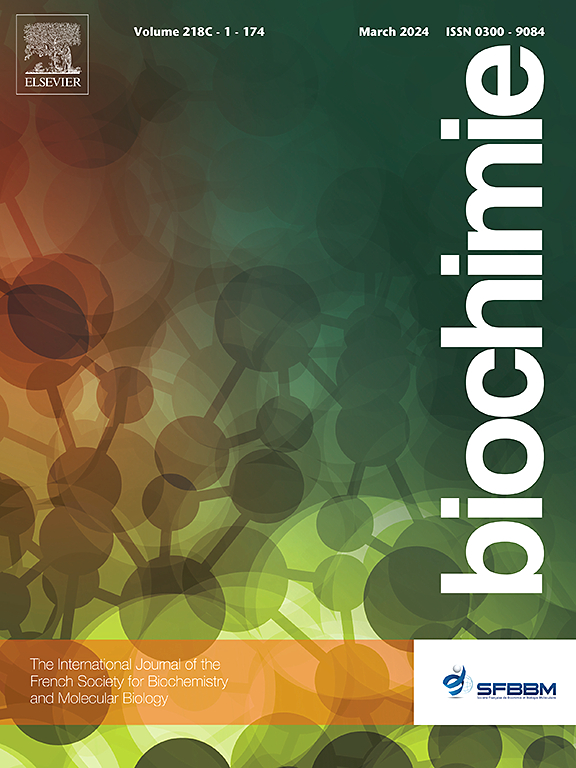配体与双螺旋侧翼的 G4 DNA 结构结合的独特方面。
IF 3.3
3区 生物学
Q2 BIOCHEMISTRY & MOLECULAR BIOLOGY
引用次数: 0
摘要
除了端粒外,人类基因组中的G4 DNA结构只能在双链DNA的背景下形成。G4结构两侧的DNA双链可能潜在地影响G4结构和G4特异性配体的结合。在这里,我们研究了TMPyP4, NMM和PDS配体与含有(GGGT)4序列的相同DNA片段形成的三种结构:双链G4 (dsG4),单链G4 (ssG4)和完美双链DNA (ds)的相互作用。为了设计结构特异性荧光传感器,用FAM修饰DNA双链中的单个胸腺嘧啶环或近端位置。配体诱导的荧光猝灭显示,TMPyP4和NMM优先与dsG4和ssG4结构结合在两侧双链DNA上。PDS不能熄灭附着在G4 DNA单核苷酸环上的荧光团,尽管凝胶迁移率测定证实配体与ssG4或dsG4结构紧密结合。我们假设G4环的选择性与双相体相比是高猝灭效率的原因。配体与G4 DNA在双相环境中相互作用的独特特征表明,为基因组G4结构开发特定配体的潜力。本文章由计算机程序翻译,如有差异,请以英文原文为准。
Distinctive aspects of ligand binding to G4 DNA structure flanked by the double helix
Except for telomeres, G4 DNA structures in the human genome can be formed only within the context of double-stranded DNA. DNA duplexes flanking the G4 structure may potentially affect the G4 architecture and the binding of G4-specific ligands. Here, we examine the interaction of TMPyP4, NMM, and PDS ligands with three structures formed by the same DNA fragment containing the (GGGT)4 sequence: the G4 in duplex (dsG4), G4 in single-stranded DNA (ssG4) and perfect duplex DNA (ds). To design a structure-specific fluorescent sensor, single thymine loops or proximal positions in DNA duplex were modified with FAM. Ligand-induced fluorescence quenching revealed a preferential binding of TMPyP4 and NMM with the dsG4 and ssG4 structures over the flanking duplex part or double-stranded DNA. PDS could not quench the fluorophores attached to single-nucleotide loops of the G4 DNA, although gel mobility assay confirmed tight binding of the ligand to the ssG4 or dsG4 structures. We hypothesize that the selectivity of the ligands for G4 loops compared to duplexes is responsible for the high quenching efficiency. Distinctive features of ligand interactions with G4 DNA in a duplex context suggest the potential for developing specific ligands for the genomic G4 structure.
求助全文
通过发布文献求助,成功后即可免费获取论文全文。
去求助
来源期刊

Biochimie
生物-生化与分子生物学
CiteScore
7.20
自引率
2.60%
发文量
219
审稿时长
40 days
期刊介绍:
Biochimie publishes original research articles, short communications, review articles, graphical reviews, mini-reviews, and hypotheses in the broad areas of biology, including biochemistry, enzymology, molecular and cell biology, metabolic regulation, genetics, immunology, microbiology, structural biology, genomics, proteomics, and molecular mechanisms of disease. Biochimie publishes exclusively in English.
Articles are subject to peer review, and must satisfy the requirements of originality, high scientific integrity and general interest to a broad range of readers. Submissions that are judged to be of sound scientific and technical quality but do not fully satisfy the requirements for publication in Biochimie may benefit from a transfer service to a more suitable journal within the same subject area.
 求助内容:
求助内容: 应助结果提醒方式:
应助结果提醒方式:


